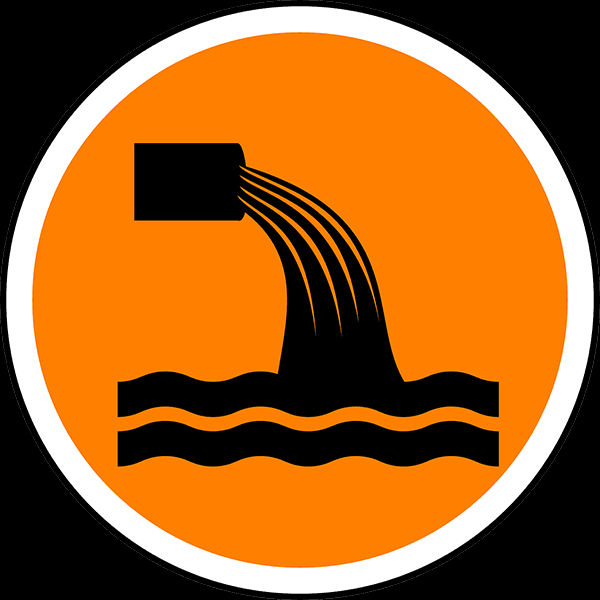The Single Strategy To Use For Reclaim Waste
Table of ContentsReclaim Waste Things To Know Before You Get ThisOur Reclaim Waste IdeasLittle Known Facts About Reclaim Waste.More About Reclaim WasteExcitement About Reclaim Waste
Residential sewage waste refers to the waste and products from a household septic storage tank. The correct administration and disposal of residential sewage waste need fluid waste to be transferred to a sewer therapy plant where the appropriate approaches and equipment are used to detoxify and dispose of waste.
Commercial waste frequently consists of prospective threats, such as flammable materials or a combination of liquid and solid waste products, and needs a more sophisticated and thorough disposal procedure. The disposal of commercial waste normally involves the filtration of waste prior to transport to ensure risk-free and correct disposal. Industrial waste is created from by-products and drainage of commercial processes and production.
This type of waste can not utilize the very same sewer management transportation or processes as septic or commercial liquids. The industrial waste administration process needs the examination and screening of fluid waste prior to it undertakes the disposal procedure (industrial wastewater treatment). Runoff waste is the liquid waste that originates from runoff and excess stormwater in highly populated areas or cities
Drainage waste can trigger contamination and flooding if not dealt with properly. Making certain correct waste administration can prevent calamities and minimize environmental injury.
Excitement About Reclaim Waste
Get in touch with PROS Providers today to discover our waste administration and disposal solutions and the proper methods to care for the liquid waste you generate.
This supposed 'wastewater' is not only an essential source however, after therapy, will be launched to our land, rivers or the ocean. Made use of water from toilets, showers, bathrooms, kitchen sinks, washings and commercial processes is recognized as wastewater.

water utilized to cool machinery or tidy plant and tools). Stormwater, a form of wastewater, is drainage that moves from farming and metropolitan areas such as roofs, parks, yards, roadways, paths and seamless gutters right into stormwater drains pipes, after rain. Stormwater moves untreated directly to local creeks or rivers, ultimately reaching the ocean.
Examine This Report about Reclaim Waste
In Queensland, the majority of wastewater is treated at sewage treatment plants. Wastewater is carried from domestic or industrial websites with a system of drains and pump terminals, referred to as sewage reticulation, to a sewer treatment plant. City governments develop, keep and operate most sewage therapy plants. Operators are licensed under the Environmental Defense Act 1994 to discharge cured wastewater at an appropriate environmental criterion into rivers.
The Division of Natural Resources suggests city governments regarding managing, operating and maintaining sewerage systems and therapy plants. In unsewered areas, local governments may require homeowners to mount individual or family sewage therapy systems to deal with residential wastewater from commodes, kitchen areas, washrooms and washings. The Department of Natural Resources authorises using household systems when they are shown to be effective.
In some brand-new communities, therapy of some stormwater to eliminate litter, sand and crushed rock has actually begun using gross toxin traps. Wastewater treatment happens in four stages: Gets rid of solid issue.
Makes use of small living organisms understands as micro-organisms to damage down and eliminate remaining liquified wastes and fine particles. Micro-organisms and wastes are included in the sludge.
Little Known Facts About Reclaim Waste.
Nutrient removal is not available in all sewage therapy plants since it needs expensive specialist devices. It is becoming more usual in Queensland. Clear liquid effluent created after therapy may still contain disease-causing micro-organisms. If this effluent is Get More Info released right into rivers such as rivers or the sea, the micro-organisms will at some point die out.

This generally indicates wastewater has actually to be dealt with or pollutants removed before it can be discharged to rivers. A lot of wastewater moves into the sewage system. Under the Act, neighborhood governments carry out approvals and licences for eco appropriate tasks (Periods) entailing wastewater releases that might have a neighborhood influence. The division administers authorizations and permits to ERAs involving wastewater launches that might have a regional or statewide influence.
Reclaim Waste - The Facts
Or else, samples are taken for research laboratory analysis. Commonly many tests are needed to develop the degrees of each of the various pollutants such as oils, heavy steels and chemicals in water. Monitoring provides accurate info concerning water top quality and can confirm that licence problems are being satisfied. The information gotten with monitoring provides the basis for making water quality choices.
Comments on “10 Easy Facts About Reclaim Waste Explained”